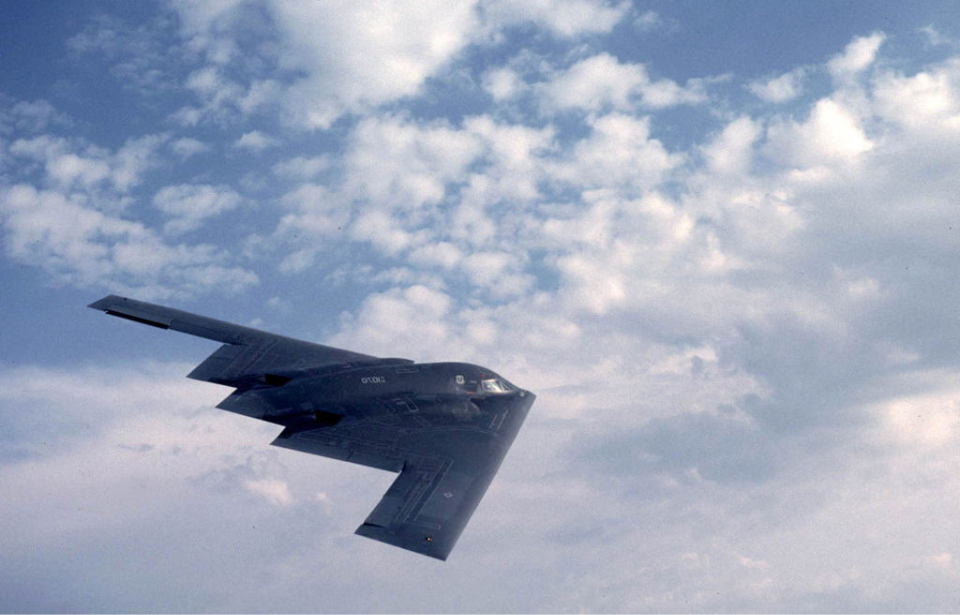The Northrop Grumman B-2 Spirit stealth bomber is one of the rarest aircraft in the world. Born out of Cold War innovation, only 21 were produced. The B-2 is almost completely undetectable by radar, a feat accomplished through its sleek design, and when combined with its heavy weapons capability is the perfect combination of stealth and strength.
Stealth and strength combined
The B-2 Spirit is a stealth heavy strategic bomber developed in the late 1980s, costing a whopping $737 million per unit! The aircraft is capable of deploying both conventional and thermonuclear weapons from as high as 50,000 feet, and is considered the only one to carry large air-to-surface standoff weapons in a stealth configuration.
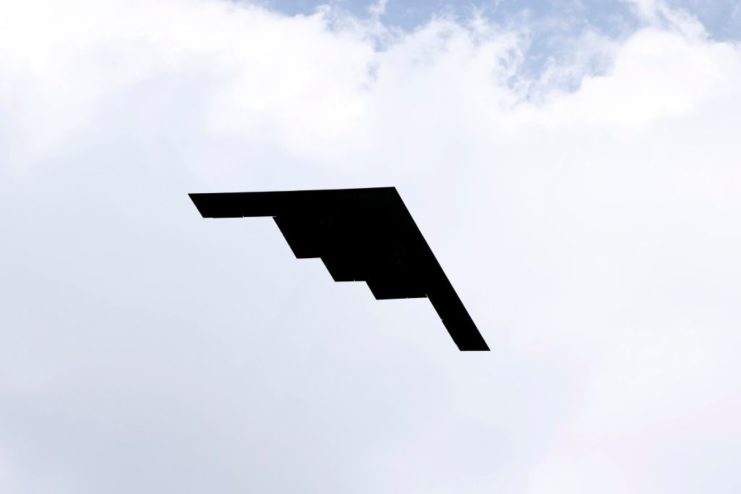
Perhaps the most intriguing aspect of the B-2 is how it gets its stealth. The aircraft is specially designed to resist radar location; the entire plane has no flat surfaces, making it impossible for radar to accurately “bounce off” it to receive coordinates. The original purpose of this high-tech bomber was to travel deep into enemy territory to deploy nuclear weapons if need be, so being able to fly undetected is key to its success.
Unlike older bombers, the B-2 is highly efficient in both aerodynamics and payload. Its ability to pass undetected by enemy radar means the aircraft can reach higher altitudes, which ultimately improves onboard sensors and weapons range.
It has a payload of 20 tons and can carry as many as eighty 500-pound Mk 82 JDAM GPS-guided missiles or sixteen 2,400-pound B38 nuclear bombs – all while traveling with a range of 6,900 miles. Additional weapons include the B61 nuclear bomb, the AGM-129 ACM cruise missile, GATOR mines and the CBU-97 Sensor Fuzed Weapon, among others.
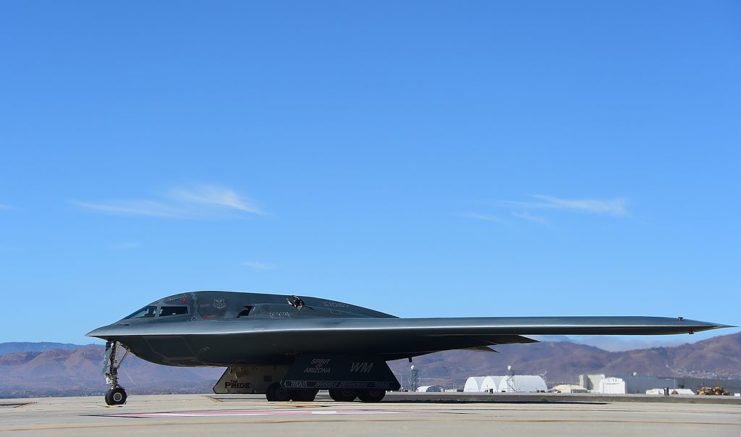
Currently, 80 US Air Force pilots fly the 20 B-2s still in service. The aircraft requires two crew members, but it’s so automated that as long as one is monitoring it, the other can sleep in an onboard bed, use the washroom and even make a hot meal!
Developing an “invisible” bomber
Unlike its predecessors, the B-2 Spirit was designed using top-of-the-line supercomputers as part of the Advanced Technology Bomber (ATB) program. It was deemed a black project – one of the most top-secret designations – meaning only individuals with the highest security clearance were allowed to work on it.
By 1989, $23 billion was spent on developing the B-2.
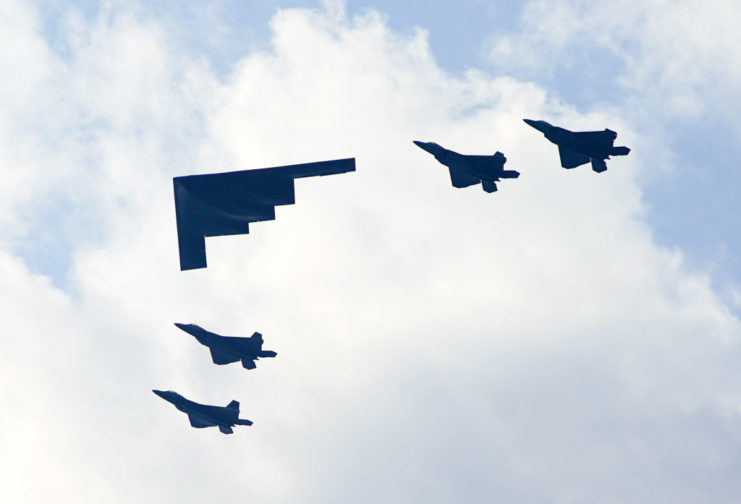
In order to keep the aircraft undetectable, engineers had to reinvent previous models and start from scratch. The B-2 would lose the majority of its stealth if its engines were mounted to its wings like conventional planes. Instead, they’re located inside the bomber using special openings to clear exhaust, to avoid any chance of reflecting radar waves.
Beyond radar, the B-2 also has onboard systems that cool emissions to reduce infrared tracking, and it’s also extremely quiet for an aircraft of its size. The B-2’s signature “flying wing” shape also helps to limit visibility to potential enemies, while a special anti-reflective coating gives it a pitch-black, UFO look in flight.
B-2 Spirits in battle
The B-2 Spirit is not a primary bomber. It’s main mission is to clear anti-aircraft defenses on the ground to make way for less-stealthy aircraft to attack. That being said, when the United States goes to war, its forces call on the B-2 first.
According to Northrop Grumman, the B-2 “went into enemy territory on Night One in support of Operation Allied Force (Serbia); Operation Enduring Freedom (Afghanistan); Operation Iraqi Freedom (Iraq) and twice in Libya in support of Operation Odyssey Dawn and Operation Odyssey Lightning.”
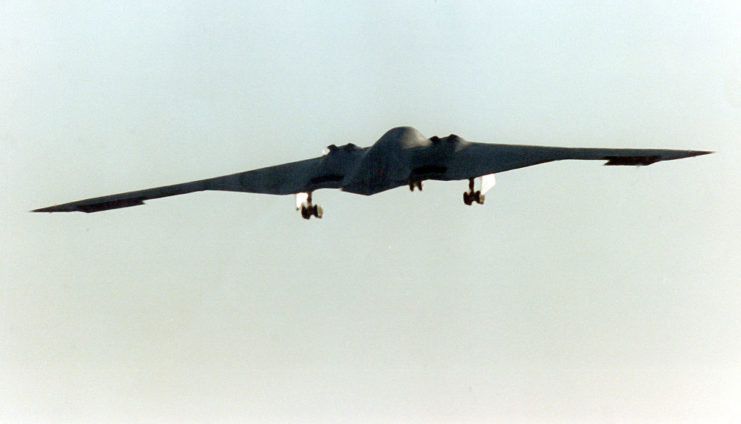
The B-2 is also considered the most reliable and survivable aircraft in the world. It entered service in 1997 and made its combat debut two years later during the Kosovo War. During the conflict, the bomber decimated 33 percent of Serbian targets in its first eight weeks, while on 30-hour round trip missions between Yugoslavia and its base in Missouri. When all was said and done, the B-2 was responsible for 11 percent of the bombs dropped over Yugoslavia.
The next conflict the B-2 was involved in was Operation Enduring Freedom, during which the bombers flew over Afghanistan and back to Missouri daily. The same occurred during the Iraq War.
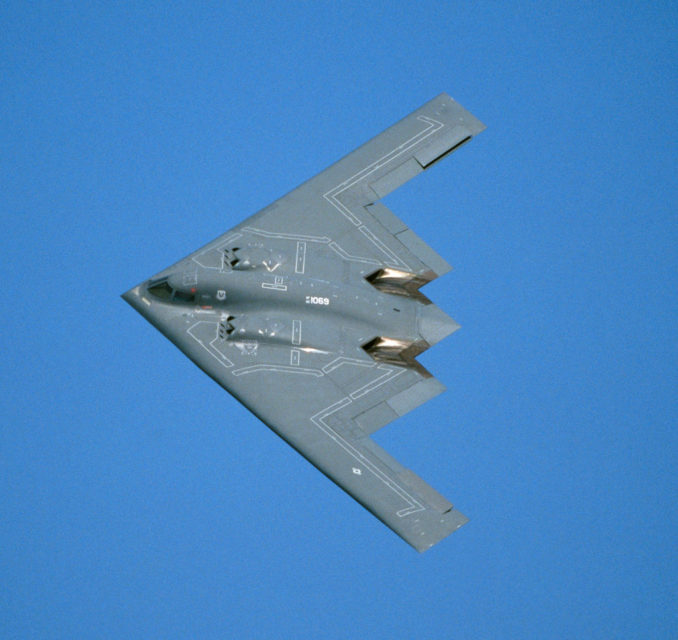
Throughout the 2010s, B-2s were used in the ongoing war on terrorism, including attacks on ISIS training camps. It’s also believed the US military considered using the aircraft to deliver a bunker-busting bomb during the effort to kill Osama bin Laden. The plan was later called off due to concerns over civilian safety and the possibility of rendering bin Laden’s body unidentifiable.
Breaking barriers
Most missions for B-2 Spirits last a minimum of 30 hours between departure, reaching the target and returning to the US, all while delivering over 40,000 pounds of precision weapons per aircraft, per trip.
The B-2 also holds the record for the longest air combat mission in history. In 2001, six of the stealth bombers entered Afghan airspace and conducted patrols for 44 hours. After a quick fuel stop, they flew the 30 hours back to base in Missouri. Ultimately, the mission lasted over 70 hours.
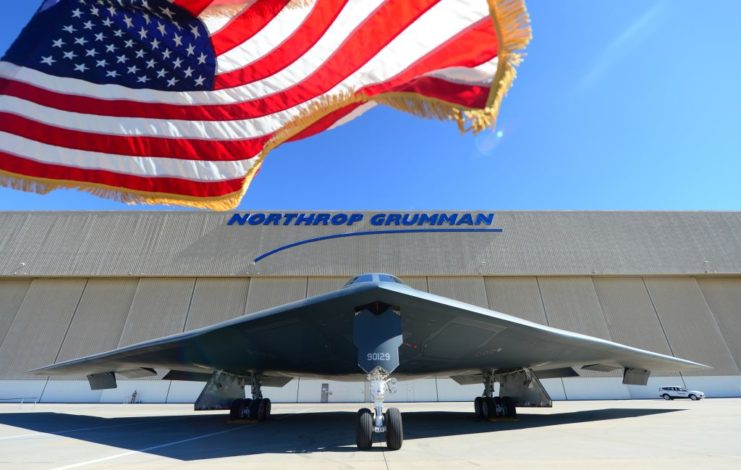
More from us: These Are the Six Iconic Planes Featured in ‘Top Gun: Maverick’
Thirty years after it was developed, the B-2 Spirit continues to be an engineering marvel that has placed the US Air Force at the forefront of aviation technology. According to program manager Richard Sullivan, “Keeping the B-2 fleet mission ready and available is our number one priority.”
It’s clear that, while the B-2 Spirit may be hard to track down, it’s not leaving our sights anytime soon.
